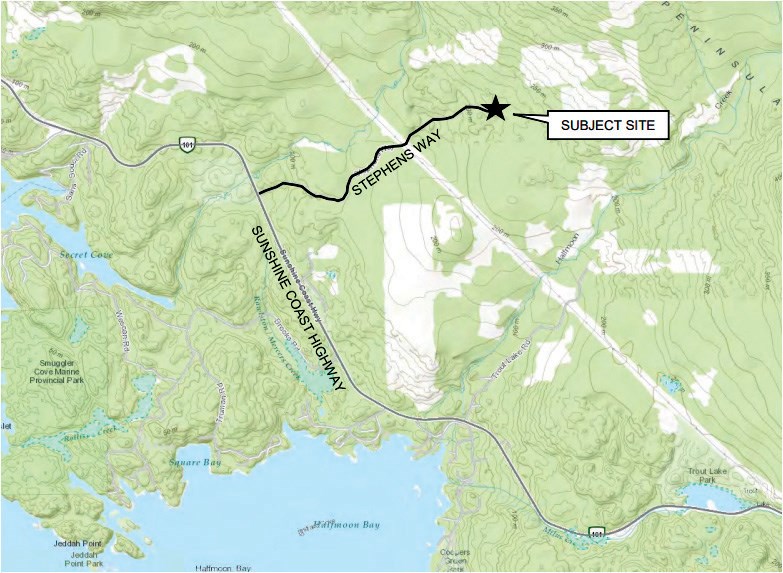A zoning bylaw amendment that would create what’s been billed as a “rural dynamic zone” in Halfmoon Bay will be heading to the Sunshine Coast Regional District (SCRD) board for first reading.
The zoning amendment is part of a subdivision proposal from Secret Cove Heights Development Inc. for property at the end of Stephen’s Way, above Highway 101.
The property is zoned Rural Two (RU2) and has the designation of Resource under the Halfmoon Bay Official Community Plan (OCP). The applicant has proposed changing the OCP designation to Rural Residential, with site-specific uses added to the RU2 zoning, intended to enable home-based businesses and “maker spaces” that depend on high-speed internet, and to allow for small-scale agriculture.
On Jan. 9, Nicole Huska, the development’s representative, returned to the SCRD’s planning and community development committee to update directors on the proposal. She had presented to directors in March 2019 but directors had delayed sending the proposal for first reading to get more public feedback.
Proposed site-specific RU2 uses that were discussed in the initial proposal remain largely the same – it would combine elements of the rural residential and agricultural zones. To support home businesses, parcel coverage would increase from 15 to 35 per cent and the number of employees allowed to work onsite would increase from one to four. Residential dwellings would be limited to one principal dwelling and one auxiliary dwelling and limits would be placed on the size of each, “to prevent over-sized estate homes,” according to the staff report.
The revised proposal would also see subject lands increase from 14 hectares to approximately 19 hectares and the number of one-hectare lots would increase from 12 to 15.
Staff recommended that directors abandon the proposal since it doesn’t conform to Halfmoon Bay’s OCP, wasn’t supported by the Halfmoon Bay Advisory Planning Commission (APC) and could “potentially encourage residential sprawl.”
According to the staff report notes, the Halfmoon Bay APC recommended refusing the proposal and asked the SCRD to provide more details about the rural dynamic zone and where it could apply on the Sunshine Coast.
Rural directors were divided on the proposal.
Despite the Halfmoon Bay APC’s resistance, Area B director Lori Pratt spoke in favour of proceeding. She said the location is becoming a hub already and wanted to see the amendment proceed to first reading to get more “robust community feedback.” During her presentation, Huska suggested despite her efforts, public feedback was limited.
Roberts Creek director Andreas Tize also voted in support of the amendments, but suggested the rural dynamic zone would be better suited to a regional growth discussion. He called it “frustrating,” however, since doing so would likely push any decisions to “four or five years down the road, because that’s how long growth strategies take.” He was also concerned about whether it could set a precedent for the Roberts Creek area.
Also supporting moving ahead with first reading was Area A director Len Lee. He called the zoning a mechanism that could enable self-sufficiency through agriculture and home business. “I’m not for urban sprawl, but I don’t see this as urban sprawl. I see this as appropriate use of a rural area.”
Those three votes were enough for the proposal to move to the board for first reading.
Both Elphinstone director Donna McMahon and Area F director Mark Hiltz voted against, arguing the zoning could result in sprawl, which could lead to increased costs for the SCRD to maintain infrastructure, which is already an ongoing challenge.
McMahon acknowledged that current zoning may be too rigid to deal with the economic realities of living on the Sunshine Coast, and the issues raised by Huska’s proposal should be examined further, but ultimately, she couldn’t support it because of those potential servicing costs. “I just have to say, great idea, but in the wrong place.”



